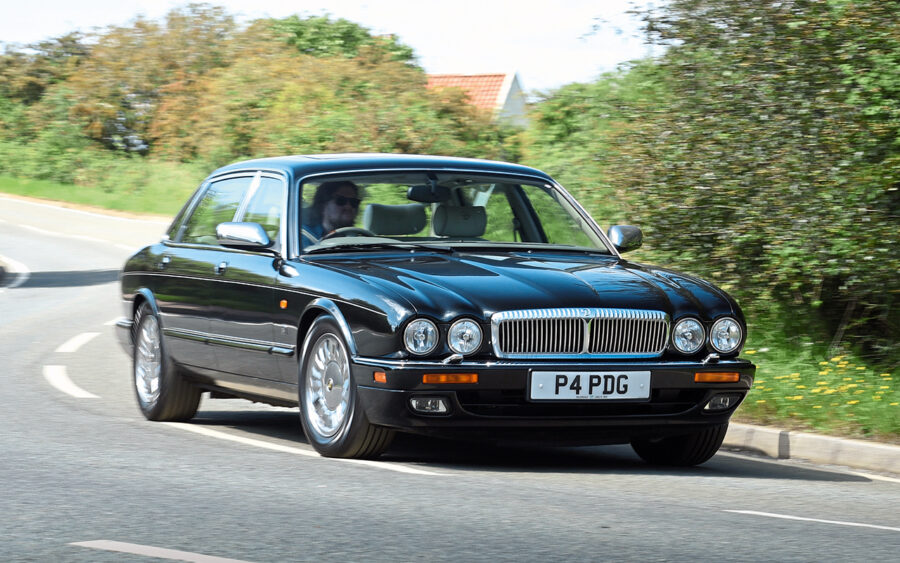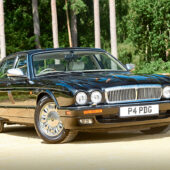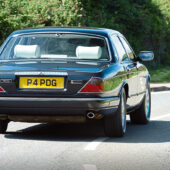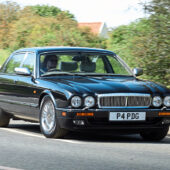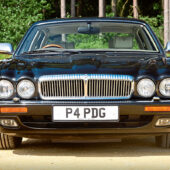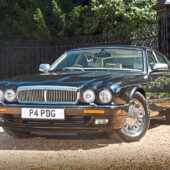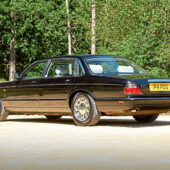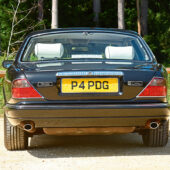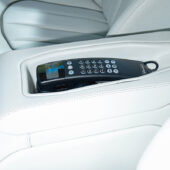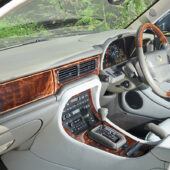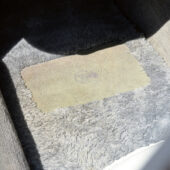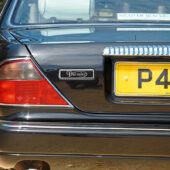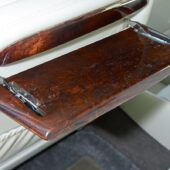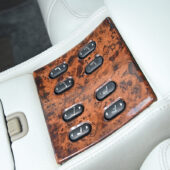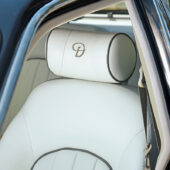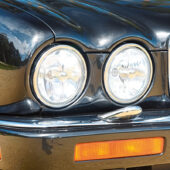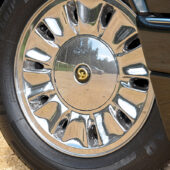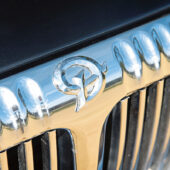Daimler was the first British car manufacturer to reach 100 years of continuous production. We sample the car that marked that anniversary – the Daimler Century
Words: Sam Skelton Images: Paul Walton
Founded in 1896, Daimler was the oldest motor manufacturer in British history which, unsurprisingly, made it the first to reach 100 years of continuous car production. And this was a milestone worth observing. So Jaguar took two very different paths to create the best of the best in the X300 world.
The first path was to create a show car par excellence, something that could be demonstrated at motor shows but which had little real chance of reaching production, which emerged as the Daimler Corsica.
Using a SWB X300 as a basis, cutting six inches from the middle and reprofiling the car as an elegant convertible, the Corsica served as an effective halo for a company entering its hundredth year. But while the Corsica has since been made roadworthy by David Marks Garages and is now enjoyed by the Jaguar Daimler Heritage Trust it was not a car that the typical Daimler buyer would ever get the opportunity to savour.
So Jaguar needed another model, one it could sell to the public to mark the occasion. And the car it created was this: the Century. Based on a standard long-wheelbase Daimler, the Century was intended as the absolute pinnacle of X300 development. To that end it would come loaded to the gunwales with optional extras designed to reflect its exclusivity.
Just ten colours would be offered for the Century, and two interior colour schemes – and only if you chose a Black example would you get to choose which interior trim you wanted. Spruce Green, Jade Green and Kingfisher Blue cars all came with Silk White leather, twinned with Sage Green interior plastics. Topaz Gold, Nautilus Blue, Sapphire Blue, Morocco Red, Steel Grey and Carnival Red models would come with Mushroom leather and Coffee panels. While these interiors would look similar to the standard Parchment and Coffee interiors, they were subtly different in hues and unique to Century models.

Not that the colour schemes were the only notable interior changes. Daimler would fit individual vanity mirrors into the headlining for rear seat passengers, as well as specifying Autolux leather and the four-seat interior on Century models as standard.
Lambswool rugs would be fitted as per standard Daimlers, but each would have a heel pad and all heel pads would be embossed with the unique Century emblem. The treadplates would also bear unique Century markings, and the passenger airbag panel of the dashboard would include a unique Century inlay.
Outside, the easiest way to spot a Century is the chromed version of the standard Daimler turbine alloys. Look more closely and you’ll see chrome trims above the rubbing strips – only introduced as a standard production item for the X308 Daimler V8 models – and unique badging.
Where a standard Daimler would feature gold badging text set against a deep red background, Century models would feature gold lettering against a black background on all badges. There would also be unique Century emblems on each front wing.
Then there were the optional extras. A Century 4.0 retailed at £63,400 – when a standard Daimler Six LWB was just £54,000. But as standard it came with several Six options – air filtration (£200), chromed alloy wheels (£780), a full size spare wheel (£105), headlamp power wash (£400), limited-slip differential (£290), folding door mirrors (£160), self-levelling suspension (£510), a memory passenger seat (£460), the four seat specification (£2500), traction control (£1045), a half wood steering wheel (£260), Autolux leather (£1045), contrast seat piping (£355), and a Harman Kardon sound system (£1220). That’s £9330 in optional extras, and virtually everything that could be thrown at a Six barring sports suspension. Specifying a Six to Century levels would thus have accounted for £63,330 of the list price – and the exclusivity of being just one of 100 to own a Century, plus unique colour schemes, plus all the Century specific touches, seemed like good value for the remaining £70.
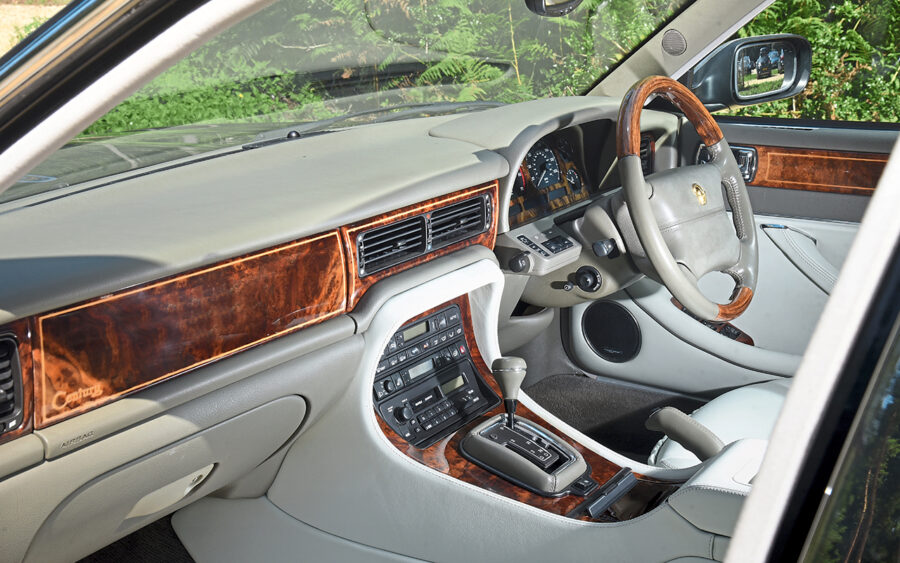
Of course, if you wanted a V12 it was possible to order the Century in Double Six form. Here, £71,000 bought you a £65,500 Double Six specced with an additional £5810 in options to match the spec of the six-cylinder Century models – in this instance, saving the would-be Double Six owner £310 against specifying those items individually.
Certain markets where the Toyota Century was already sold, including Japan and New Zealand, received a similar model badged as the Daimler Centenary – it is believed that these are additional to the 100 4.0 Centurys and 100 6.0 Centurys produced, but the specification is largely identical barring the badging. Daimler boasted that just 100 of each would be produced, but we have seen evidence to suggest even fewer were made. Jaguar’s own records show, for instance, just 93 4.0 models of which one third were right-hand drive.
Making the 4.0 Century we have here today a particularly rare specimen. Finished in Black with the Silk White leather and sage panels, it looks special – to a point where even other Daimlers pale in comparison. The deep and lustrous metallic black paint on this example has no swirl marks, no scratches, no damage – the chromed alloys are untouched by kerb or stone.
The buyer of this car in 1996 could have chosen to buy a Mercedes-Benz S420L, a BMW 750i, or – if he wanted to stick with Coventry – two XJ6 3.2s with change.
Make no mistake, a Century 4.0 was an expensive car when new and for the money its buyer was entitled to feel special. As the owner of a standard Daimler Six with most of the Century options fitted from new, the Century still feels like a special car to me. Is it something about the colour scheme? The tiny details? The knowledge that I’m behind the wheel of something so rare? I don’t know. But some of the details in here are so minor it takes an expert to see them.
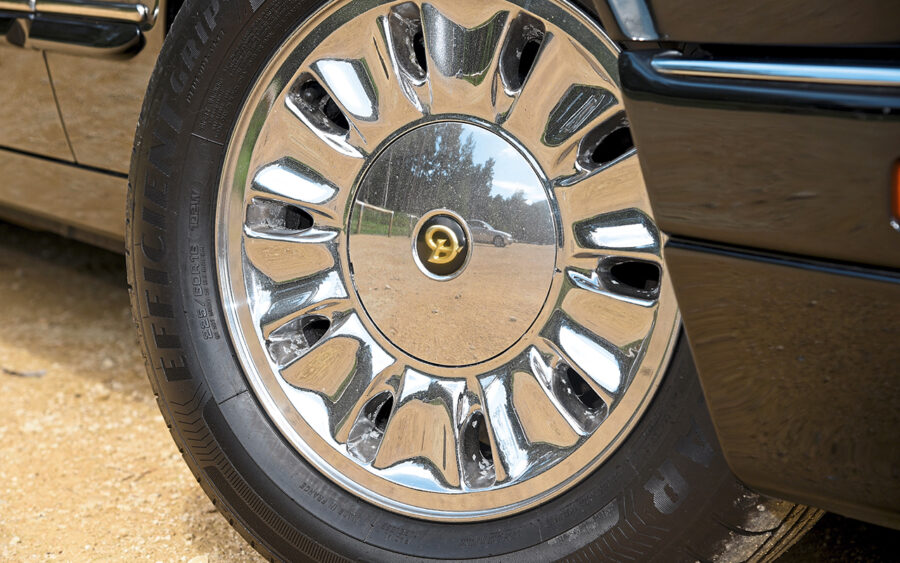
Take the seat pleating. Daimler offered two types – the standard fore-aft pleating of the Six, and the ruched side to side stitching of the Double Six with standard Autolux. The Century features Double Six style Autolux seating, but with the pleating of the Six model – adding to the colour and the Daimler-monogrammed head restraints as a reminder that this is no standard car.
Then there’s the dash plastics. All X300s with two tone interiors have a colour split at the level of the dash top – the door cappings and dash top are typically the darker colour, while the glovebox, knee pad and centre console match the seats. Century models are different. With a Century, the dashboard is single tone – the glovebox and knee pad match the dash top, and the colour split is at the centre console. It takes a few minutes to notice it – but it’s just another way that the Century marks itself as separate from standard models at any price point.
You don’t need to see the word Century inlaid into the walnut to know exactly what you’re in. And the wood on this example is beautifully dark – over time the effects of UV damage cause the wood to become paler and less rich in hue, offering less of a contrast against the boxwood inlays. But this car with just 25,000 miles – an average of fewer than 1000 miles per year – still has the deepest, darkest of walnut. The leather is unmarked. It even smells right.
So how does it drive? Well, let’s be honest. You don’t buy a Daimler Century for the driving experience. That’s not to say it drives badly by any stretch of the imagination. But the Century is a unique model in that it is cosmetically enhanced, specified and trimmed in a special way, not because of any mechanical changes. So from behind the wheel this Century 4.0 feels little different to my Daimler Six, notwithstanding particular foibles of either of the two cars.
That means that when you turn the key, there’s a muted six-cylinder growl. Slip it into D, and you set off with nary a ruffle. The steering is nicely weighted, the ride superlative and the car engaging. But when a buyer in 1996 could have got all this – admittedly with less performance – for less than half the price from the same showroom, is it really relevant?
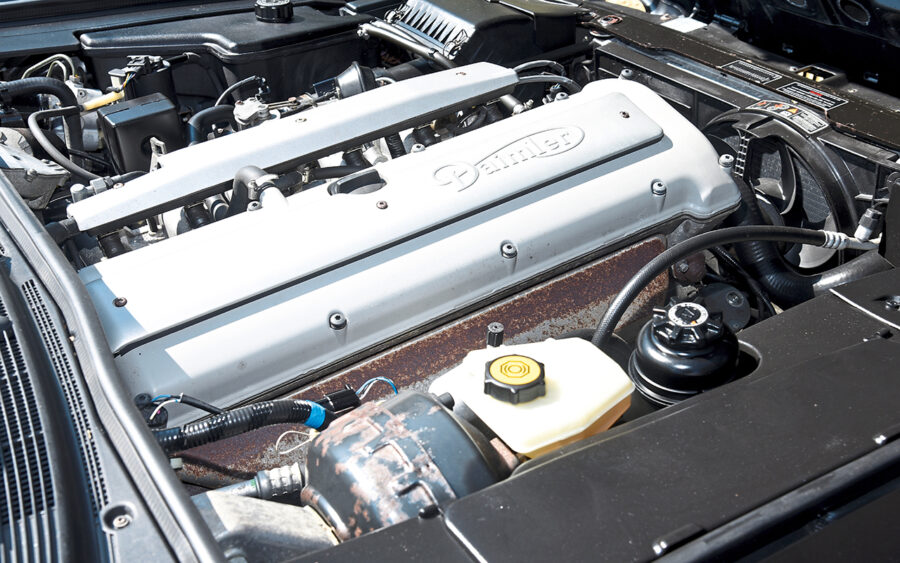
What is relevant is the way that this car makes you feel. And while you might expect it to feel like any other X300, that’s a misconception – even if it’s one you could be forgiven for having. Because driving the Century feels like something different. It’s not just because of how low mileage this example is, nor is it because of the optional extras that come as standard – a Jaguar XJ6 with heated seats or the Harman Kardon sound system doesn’t really get close.
It’s this special nature, combined with the rarity, that makes the Century so valuable when compared with other X300 models – even the revolutionary supercharged XJR. Daimler models as standard typically fetch a lofty price premium over the equivalent Jaguar XJ6 or Sovereign – the fluted grille, the picnic tables and the full spec are worth up to 100% more for the right car. But even over a standard Daimler the cachet of Century ownership can bring a premium.
Daimler Century: our verdict
At £18,995 the Century in our photos may seem ludicrous when compared with an equivalent-condition Sovereign at around half the price. And if we’re totally objective about this, the two cars differ very little. But classic cars are not objective, they’re emotional, subjective reflections of who we are and who we would like to be. The Century speaks to that side of us, marking us out as separate and special and for many that makes the premium worth paying. For what it is – a Century that is very nearly out of the box in terms of condition – this car’s price is about right.
After all, how many other British motor manufacturers can claim to have been the first to hit the hundred year mark?

